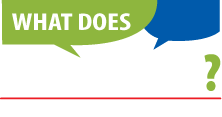Community Answers
Leave a Comment Cancel reply
This site uses Akismet to reduce spam. Learn how your comment data is processed.
Recent Posts
Recent Comments
- Ottawan on What does "~" mean?
- andy :D on What does :), :P, =D, :O, ;), :V, ./, :'(, <3, o.O, B|, 3:) mean?
- Caiden on What does ;-; mean?
- Word Smith on What does "mex" mean,as two seconds mex"
- Bill on What does you’re barmy mean?
Categories
Tags
;_;
Buzzword
Catch Phrase
confused
De Crevecoeur
does
emoticon
emoticons
emotion
expression
expressions
Face
FACEBOOK
faces
Franklin
Freneau
hashtag
help
Idiom
Jefferson
love
me
mean
meaning
None
Paine
please
quote
Quotes
sayings
Slang
symbol
symbols
talk
term
text
texting
Text symbols
tongue
Twitter
what
what does // mean
what does this mean
word
☪




It basically means don’t get upset, or don’t get agitated. The original expression was “don’t get your knickers in a twist.” Knickers were long socks/tights worn by women, and the idea is that if women were upset or agitated, their knickers might get in a twist and look bad. “Knot” was probably substituted to exaggerate for effect – plus, it just sounds good. There are other variations, as well, such as “panties in a bunch,” “undies in a twist,” etc.
Was this answer helpful?
LikeDislikeThe meaning given is correct, but knickers are not long socks/tights. The word is the standard informal expression in British English for normal underwear, especially when worn by women, what Americans call panties or undies.
Was this answer helpful?
LikeDislikeKnickers is also used to describe 3/4 length pants, like those used in baseball.
Sometimes called capri.